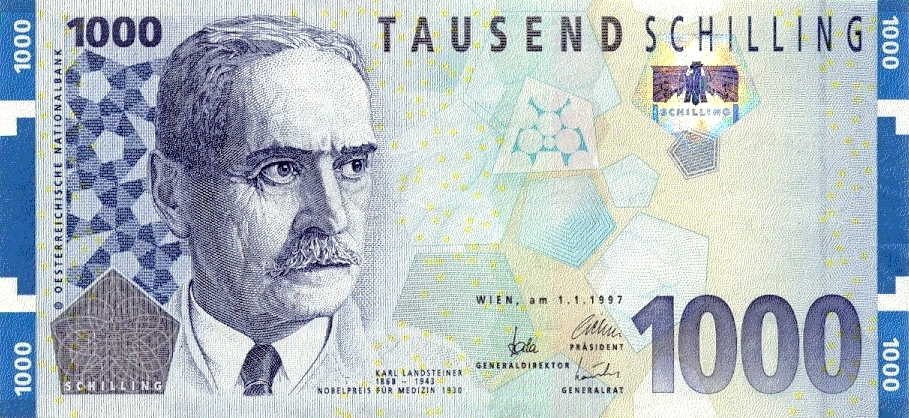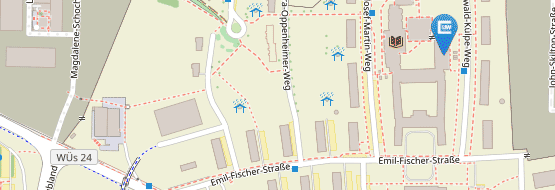Karl Landsteiner
Scholar of the month: Karl Landsteiner
* 14. June 1868 in Baden, near Vienna † 26. June 1943 in New York
1885 Study of Medicine in Vienna
1891 Conferral of a doctorate at the University of Vienna
Study of Chemistry in Würzburg, Munich and Zurich
1897 Assistant at the Institute for Hygiene in Vienna
1898 Assistant at the pathological-anatomical Institute of Vienna
1903 Habilitation at the University of Vienna
1908 Prosector at the Wilhelminen-Spital in Vienna
1911 Extraordinary Professor for Pathology at the University of Vienna
1919 Occupation at the catholic Hospital R. K. Ziekenhuis Den Haag
1922 Transfer to the Rockefeller Institute for Medical Research New York
1930 Nobel Prize in Physiology or Medicine
With Karl Landsteiner, the Universitätsarchiv Würzburg wants to honour another Scholar in May 2019, whose findings have a beneficial effect on our life even today. For his scientific achievements and discoveries, especially on the field of haematology and serology he was awarded the Nobel Prize in Physiology or Medicine in 1930. Now he also shall be appreciated in our “Scholar of the Month”-Series.
Life, Study and early research
Karl Landsteiner was born in 1868 in Baden near Vienna. His father, the well-known journalist Leopold Landsteiner, died when his son was only six years old. In Vienna he attended the State Gymnasium, where he passed his Matura with the best possible grade in 1885. Between 1885 and 1890, Landsteiner studied Medicine at the University of Vienna, with receiving his conferral of the doctorate one year later. Already during his time as a student, Landsteiner occupied himself with the research on blood and published a study about the influence of diets on the composition of blood in 1891. The following years he spent his time in laboratories in different locations, like Zurich, Munich and Würzburg. He complemented his medical skills in 1894 with the qualification to work as a surgeon. Until 1897 he was the Assistant of Max von Gruber at the Institute of Hygiene in Vienna and from 1898 to 1908 prosector at the pathologic-anatomical Institute of the city. During this time he again concerned himself with his research on blood, the field of interest that later made him win the Nobel Prize.
Landsteiner in Würzburg
The endeavour, to extend his knowledge in chemistry is one of the many reasons for Landsteiner to come to Würzburg. Here, he was enabled to cooperate with Emil Fischer, who had a great influence on him. At this time, Fischer conducted research on the structural elucidation of different sugars and involved Landsteiner in his work. He assigned the young scientist with the yet unresolved question to create Glycolaldehyde, in which he succeeded. The range of sugars was thereby supplemented by synthetic Tetrose and Landsteiner’s research findings were published in the journal of the Deutsche Chemische Gesellschaft.
A footnote made a change in medicine
During his haematological research, Landsteiner closer observed the clumping or dissolving effect of blood serum and lymph in 1900. In his research paper about the appearances of agglutinations in normal human blood, which was published the following year, he initially described his assumption that there are different blood types. Before, he took blood samples of himself and his colleagues, mixed them and observed, that some samples clumped while others did not. In a simple footnote, he presented his findings, that there must be three different types of blood, which possess different characteristics and are not universally compatible. In the basis of these findings, he and his colleagues undertook the classification of the different types into A, B, AB and 0, which is still valid until today. His discovery entailed the ground-breaking realisation, that the transfusion of blood between humans with the same blood type does not lead to the destruction of blood cells, which is only the case if the blood types differ. The understanding of this principle paved the way for the first successful transfusion of blood in 1907, which until today is of enormous medical importance. For his research, Karl Landsteiner was awarded with the Nobel Prize for Physiology or Medicine at the 11. December 1930.
More than just a Haematologist
The field of research of Landsteiner was not just limited to the studies of blood. Also essential insights about the syndrome of poliomyelitis can be credited to him. In cooperation with the Austrian physician Erwin Popper he proofed, that the cause of poliomyelitis is an infection. In Austria after World War I, he did not find fertile ground for his research, which made him emigrate to Den Haag in 1919 and finally to the USA, where he worked at the Rockefeller Institute for Medical Research. There, he discovered the Rhesus factor together with Philip Levine and Alexander Solomon Wiener in 1940.

Recommended Reading:
Speiser, Paul: Karl Landsteiner: Entdecker der Blutgruppen; Biographie eines Nobelpreisträgers aus der Wiener Medizinischen Schule, Wien 1961.


